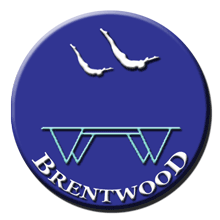Deductions
The previous page about judging provides an insight into how judging might not always be as completely objective as it ought to be. The following provide the basic guidelines adopted by judges in deciding what deductions to make and is drawn from the current (2005-2008) FIG Code of Points. Clearly there are many elements in play and a limited time for a judge to assess each move; normally though, experienced judges tend to be pretty much on the nail.
| 0.0 | 0.1 | 0.2 | 0.3 | |
|---|---|---|---|---|
Body position |
||||
| Bending of the legs |  |
 |
 |
 |
| Position of the legs (1) |  |
 |
 |
 |
| Position of the legs (2) |  |
 |
 |
 |
| Pointing of the feet/toes |  |
 |
 |
|
| Bending of the arms |  |
 |
 |
|
| Position of the arms |  |
 |
||
| Position of the head |  |
 |
||
Shape positions |
||||
| Straight, bending of body, somersaults with or without twist |  |
 |
 |
|
| Pike, angle upper body/thighs, without twist |  |
 |
 |
 |
| Pike, hand position |  |
 |
||
| Pike, multiple somersault with twist |  |
 |
 |
|
| Straddle jump |  |
 |
||
| Tuck, angle upper body/thighs, without twist |  |
 |
 |
 |
| Tuck, knees apart |  |
 |
 |
 |
| Tuck, position of arms/hands |  |
 |
 |
 |
| Tuck, multiple somersaults with twist (puck) |  |
 |
||
Somersaults |
||||
| Opening of somersaults |  |
 |
 |
 |
| Landings, bending of knees |  |
 |
||
Accuracy/consistency |
||||
| Insecurity, travel/cast |  |
 |
 |
 |
| Loss of height - take-off from feet |  |
 |
 |
 |
| Loss of height - take-offs from body landing |  |
 |
 |
Illustrations:
The drawings are intended as a guide to interpretation of the written code relevant extracts of which state:
Required positions during an element
To determine the body shape (tuck, pike or straight) during an element, the Difficulty Judges will, in general terms, assess the shape based on the least difficult shape adopted during the middle phase of the element (straight is considered the most difficult position and tuck the least difficult position).
14.1 In all positions, the feet and legs should be kept together (except straddle jumps), and the feet and toes pointed.
14.2 Depending on the requirements of the element, the body should be tucked, piked or straight.
14.3 In the tucked and piked positions the thighs should be close to the upper body, except in the twisting phase of multiple somersaults (see 14.7).
14.4 In the tucked position the hands should touch the legs below the knees except in the twisting phase of multiple somersaults (see ☺14.7).
14.5 The arms should be straight and/or held close to the body whenever possible.
14.6 The following defines the minimum requirements for a particular body shape:
14.6.1 Straight position: The angle between the upper body and thighs must be greater than 135°.
14.6.2 Pike position: The angle between the upper body and thighs must be equal to or less than 135° and the angle between the thighs and the lower legs must be greater than 135°.
14.6.3 Tuck position: The angle between the upper body and thighs must be equal to or less than 135° and the angle between the thighs and the lower legs must be equal to or less than 135°.
14.7 In multiple somersaults with twists, the tuck and pike position may be modified during the twisting phase as shown in the drawings above (puck and pike twisting positions).
21.3.1 - Evaluation of execution
- Position of the arms 0.0-0.2 pts
- Position of the legs 0.0-0.3 pts
- Position of the body 0.0-0.4 pts
- Loss of height 0.0-0.3 pts
- Opening of the somersault 0.0-0.3 pts
- Horizontal displacement 0.0-0.3 pts
NOTE: In no case the deduction for poor execution may exceed 0.5 points per element.
The full FIG Code of Points can be downloaded here.
The old BTF-based descriptions were very similar although did go into a little more detail in terms of body/leg/arm angles etc...; they can be seen in the linked page.
 ®
®









